RBS 2012 Annual Report Download - page 293
Download and view the complete annual report
Please find page 293 of the 2012 RBS annual report below. You can navigate through the pages in the report by either clicking on the pages listed below, or by using the keyword search tool below to find specific information within the annual report.-
 1
1 -
 2
2 -
 3
3 -
 4
4 -
 5
5 -
 6
6 -
 7
7 -
 8
8 -
 9
9 -
 10
10 -
 11
11 -
 12
12 -
 13
13 -
 14
14 -
 15
15 -
 16
16 -
 17
17 -
 18
18 -
 19
19 -
 20
20 -
 21
21 -
 22
22 -
 23
23 -
 24
24 -
 25
25 -
 26
26 -
 27
27 -
 28
28 -
 29
29 -
 30
30 -
 31
31 -
 32
32 -
 33
33 -
 34
34 -
 35
35 -
 36
36 -
 37
37 -
 38
38 -
 39
39 -
 40
40 -
 41
41 -
 42
42 -
 43
43 -
 44
44 -
 45
45 -
 46
46 -
 47
47 -
 48
48 -
 49
49 -
 50
50 -
 51
51 -
 52
52 -
 53
53 -
 54
54 -
 55
55 -
 56
56 -
 57
57 -
 58
58 -
 59
59 -
 60
60 -
 61
61 -
 62
62 -
 63
63 -
 64
64 -
 65
65 -
 66
66 -
 67
67 -
 68
68 -
 69
69 -
 70
70 -
 71
71 -
 72
72 -
 73
73 -
 74
74 -
 75
75 -
 76
76 -
 77
77 -
 78
78 -
 79
79 -
 80
80 -
 81
81 -
 82
82 -
 83
83 -
 84
84 -
 85
85 -
 86
86 -
 87
87 -
 88
88 -
 89
89 -
 90
90 -
 91
91 -
 92
92 -
 93
93 -
 94
94 -
 95
95 -
 96
96 -
 97
97 -
 98
98 -
 99
99 -
 100
100 -
 101
101 -
 102
102 -
 103
103 -
 104
104 -
 105
105 -
 106
106 -
 107
107 -
 108
108 -
 109
109 -
 110
110 -
 111
111 -
 112
112 -
 113
113 -
 114
114 -
 115
115 -
 116
116 -
 117
117 -
 118
118 -
 119
119 -
 120
120 -
 121
121 -
 122
122 -
 123
123 -
 124
124 -
 125
125 -
 126
126 -
 127
127 -
 128
128 -
 129
129 -
 130
130 -
 131
131 -
 132
132 -
 133
133 -
 134
134 -
 135
135 -
 136
136 -
 137
137 -
 138
138 -
 139
139 -
 140
140 -
 141
141 -
 142
142 -
 143
143 -
 144
144 -
 145
145 -
 146
146 -
 147
147 -
 148
148 -
 149
149 -
 150
150 -
 151
151 -
 152
152 -
 153
153 -
 154
154 -
 155
155 -
 156
156 -
 157
157 -
 158
158 -
 159
159 -
 160
160 -
 161
161 -
 162
162 -
 163
163 -
 164
164 -
 165
165 -
 166
166 -
 167
167 -
 168
168 -
 169
169 -
 170
170 -
 171
171 -
 172
172 -
 173
173 -
 174
174 -
 175
175 -
 176
176 -
 177
177 -
 178
178 -
 179
179 -
 180
180 -
 181
181 -
 182
182 -
 183
183 -
 184
184 -
 185
185 -
 186
186 -
 187
187 -
 188
188 -
 189
189 -
 190
190 -
 191
191 -
 192
192 -
 193
193 -
 194
194 -
 195
195 -
 196
196 -
 197
197 -
 198
198 -
 199
199 -
 200
200 -
 201
201 -
 202
202 -
 203
203 -
 204
204 -
 205
205 -
 206
206 -
 207
207 -
 208
208 -
 209
209 -
 210
210 -
 211
211 -
 212
212 -
 213
213 -
 214
214 -
 215
215 -
 216
216 -
 217
217 -
 218
218 -
 219
219 -
 220
220 -
 221
221 -
 222
222 -
 223
223 -
 224
224 -
 225
225 -
 226
226 -
 227
227 -
 228
228 -
 229
229 -
 230
230 -
 231
231 -
 232
232 -
 233
233 -
 234
234 -
 235
235 -
 236
236 -
 237
237 -
 238
238 -
 239
239 -
 240
240 -
 241
241 -
 242
242 -
 243
243 -
 244
244 -
 245
245 -
 246
246 -
 247
247 -
 248
248 -
 249
249 -
 250
250 -
 251
251 -
 252
252 -
 253
253 -
 254
254 -
 255
255 -
 256
256 -
 257
257 -
 258
258 -
 259
259 -
 260
260 -
 261
261 -
 262
262 -
 263
263 -
 264
264 -
 265
265 -
 266
266 -
 267
267 -
 268
268 -
 269
269 -
 270
270 -
 271
271 -
 272
272 -
 273
273 -
 274
274 -
 275
275 -
 276
276 -
 277
277 -
 278
278 -
 279
279 -
 280
280 -
 281
281 -
 282
282 -
 283
283 -
 284
284 -
 285
285 -
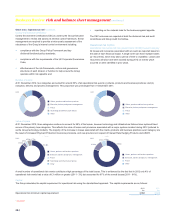 286
286 -
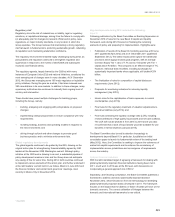 287
287 -
 288
288 -
 289
289 -
 290
290 -
 291
291 -
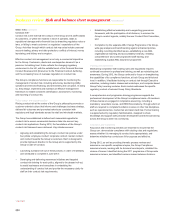 292
292 -
 293
293 -
 294
294 -
 295
295 -
 296
296 -
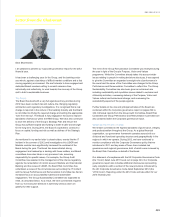 297
297 -
 298
298 -
 299
299 -
 300
300 -
 301
301 -
 302
302 -
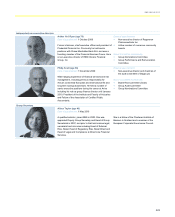 303
303 -
 304
304 -
 305
305 -
 306
306 -
 307
307 -
 308
308 -
 309
309 -
 310
310 -
 311
311 -
 312
312 -
 313
313 -
 314
314 -
 315
315 -
 316
316 -
 317
317 -
 318
318 -
 319
319 -
 320
320 -
 321
321 -
 322
322 -
 323
323 -
 324
324 -
 325
325 -
 326
326 -
 327
327 -
 328
328 -
 329
329 -
 330
330 -
 331
331 -
 332
332 -
 333
333 -
 334
334 -
 335
335 -
 336
336 -
 337
337 -
 338
338 -
 339
339 -
 340
340 -
 341
341 -
 342
342 -
 343
343 -
 344
344 -
 345
345 -
 346
346 -
 347
347 -
 348
348 -
 349
349 -
 350
350 -
 351
351 -
 352
352 -
 353
353 -
 354
354 -
 355
355 -
 356
356 -
 357
357 -
 358
358 -
 359
359 -
 360
360 -
 361
361 -
 362
362 -
 363
363 -
 364
364 -
 365
365 -
 366
366 -
 367
367 -
 368
368 -
 369
369 -
 370
370 -
 371
371 -
 372
372 -
 373
373 -
 374
374 -
 375
375 -
 376
376 -
 377
377 -
 378
378 -
 379
379 -
 380
380 -
 381
381 -
 382
382 -
 383
383 -
 384
384 -
 385
385 -
 386
386 -
 387
387 -
 388
388 -
 389
389 -
 390
390 -
 391
391 -
 392
392 -
 393
393 -
 394
394 -
 395
395 -
 396
396 -
 397
397 -
 398
398 -
 399
399 -
 400
400 -
 401
401 -
 402
402 -
 403
403 -
 404
404 -
 405
405 -
 406
406 -
 407
407 -
 408
408 -
 409
409 -
 410
410 -
 411
411 -
 412
412 -
 413
413 -
 414
414 -
 415
415 -
 416
416 -
 417
417 -
 418
418 -
 419
419 -
 420
420 -
 421
421 -
 422
422 -
 423
423 -
 424
424 -
 425
425 -
 426
426 -
 427
427 -
 428
428 -
 429
429 -
 430
430 -
 431
431 -
 432
432 -
 433
433 -
 434
434 -
 435
435 -
 436
436 -
 437
437 -
 438
438 -
 439
439 -
 440
440 -
 441
441 -
 442
442 -
 443
443 -
 444
444 -
 445
445 -
 446
446 -
 447
447 -
 448
448 -
 449
449 -
 450
450 -
 451
451 -
 452
452 -
 453
453 -
 454
454 -
 455
455 -
 456
456 -
 457
457 -
 458
458 -
 459
459 -
 460
460 -
 461
461 -
 462
462 -
 463
463 -
 464
464 -
 465
465 -
 466
466 -
 467
467 -
 468
468 -
 469
469 -
 470
470 -
 471
471 -
 472
472 -
 473
473 -
 474
474 -
 475
475 -
 476
476 -
 477
477 -
 478
478 -
 479
479 -
 480
480 -
 481
481 -
 482
482 -
 483
483 -
 484
484 -
 485
485 -
 486
486 -
 487
487 -
 488
488 -
 489
489 -
 490
490 -
 491
491 -
 492
492 -
 493
493 -
 494
494 -
 495
495 -
 496
496 -
 497
497 -
 498
498 -
 499
499 -
 500
500 -
 501
501 -
 502
502 -
 503
503 -
 504
504 -
 505
505 -
 506
506 -
 507
507 -
 508
508 -
 509
509 -
 510
510 -
 511
511 -
 512
512 -
 513
513 -
 514
514 -
 515
515 -
 516
516 -
 517
517 -
 518
518 -
 519
519 -
 520
520 -
 521
521 -
 522
522 -
 523
523 -
 524
524 -
 525
525 -
 526
526 -
 527
527 -
 528
528 -
 529
529 -
 530
530 -
 531
531 -
 532
532 -
 533
533 -
 534
534 -
 535
535 -
 536
536 -
 537
537 -
 538
538 -
 539
539 -
 540
540 -
 541
541 -
 542
542 -
 543
543
 |
 |

RBS GROUP 2012
291
Reputational risk*
Reputational risk is the risk of brand damage and/or financial loss due to
a failure to meet stakeholders’ expectations of the Group’s conduct and
performance.
Stakeholders include customers, investors, rating agencies, employees,
suppliers, government, politicians, regulators, special interest groups,
consumer groups, media and the general public. Brand damage can be
detrimental to the business in a number of ways, including an inability to
build or sustain business relationships with customers, low staff morale,
regulatory censure or reduced access to funding sources.
One of the most fundamental stakeholder expectations is that a bank is
financially prudent, safe and sound. The Group has made significant
progress in meeting this expectation through the execution of its Strategic
Plan in restructuring its balance sheet and improving its capital and
funding position. Major reforms have also been made to strengthen its
risk identification, evaluation and management processes. Further work
remains, but the Group is now in a much stronger financial position to
face challenges and uncertainties in its economic and operating
environment.
Restoring the reputation of the Group and the wider banking sector is
built upon the role of banks as good companies that perform well for their
owners, regulators, employees and communities and, above all else,
serve their customers well.
The Group has put the focus on serving customers well at the heart of its
strategic objectives that, combined with a safe and sound bank, will build
a culture and reputation in line with our stakeholder expectations. There
are still legacy issues to work through, but dealing with them in an open
and direct manner is a necessary part of the ability to move forward.
The Group’s reputational risk management framework is aligned with its
strategic objectives and its risk appetite goal of maintaining stakeholder
confidence. It is designed to embed, at different points of decision-making
processes, a series of reputational filters and controls that examine
products, services and activities through the lenses of sustainability,
transparency and fairness.
This approach recognises that reputational risk can arise across a range
of actions taken (or not taken) by the Group, as well as its wider conduct,
policies and practices. Therefore, it is aligned with the management of a
range of risk types that have a high reputational sensitivity.
The Group Board risk report contains a ‘top slice’ view of key embedded
risks, including a reputational risk impact assessment of each key risk. In
addition, the divisions report to their own committees and Boards on
relevant barometers of reputational risk and actions to manage
reputational events according to the source.
For example, an Environmental, Social and Ethical (ESE) risk
management function assesses the ESE risks associated with business
engagements and business divisions, while the Group Policy Framework
includes a range of policies relating to conduct and reputational matters.
(For credit risk specific information on ESE risk policies, refer to Credit
risk management framework on page 160).
The Group Board has ultimate responsibility for managing the Group’s
reputation, though all parts of the Group have responsibility for any
reputational impact arising from their operations. The Board’s oversight of
reputational issues is supported by executive risk committees (including a
new Conduct Risk Committee) and by the Group Sustainability
Committee. Emerging reputational issues are pro-actively identified and
assessed by a dedicated working group, and escalated through the
appropriate governance channels where necessary.
Business risk*
Business risk is the risk that the Group suffers losses as a result of
adverse variance in its revenues and/or costs relative to its business plan
and strategy. Such variance may be caused by internal factors such as
volatility in pricing, sales volumes and input costs and/or by external
factors such as the Group’s exposure to macroeconomic, regulatory and
industry risks.
Business risk is impacted by other risks the Group faces that may
contribute to the adverse changes in the Group's revenues and/or costs,
were these risks to crystallise. Examples of such risks include funding
risk (through volatility in cost of funding), interest rate risk in the banking
book, operational risk, conduct risk and reputational risk.
The Group seeks to minimise its exposure to business risk, subject to its
wider strategic objectives. Business risk is identified, measured and
managed through the Group’s planning cycles and performance
management processes. Expected profiles for revenues and costs are
determined, on a bottom-up basis, through plans reflecting expectations
of the external environment and the Group’s strategic priorities. These
profiles are tested against a range of stress scenarios and factors to
identify the key risk drivers behind any potential volatility, along with
management actions to address and manage them.
The Group operates a rolling forecast process which identifies projected
changes in, or risks to operating profit and ensures appropriate actions
are taken.
The Group Board has ultimate responsibility for the impact of any
volatility in revenues and costs on the Group’s performance. Business
risk is incorporated within the Group’s risk appetite target for earnings
volatility, with an assessment of volatility in revenues and costs a key
component in determining whether the Group and its underlying
businesses are within risk appetite.
The management of business risk lies primarily with divisions, with
oversight at the Group level led by Finance. Divisions are responsible for
delivery of their business plans and management of such factors as
pricing, sales volumes, marketing spend and other factors that can
introduce volatility into earnings.
*unaudited
